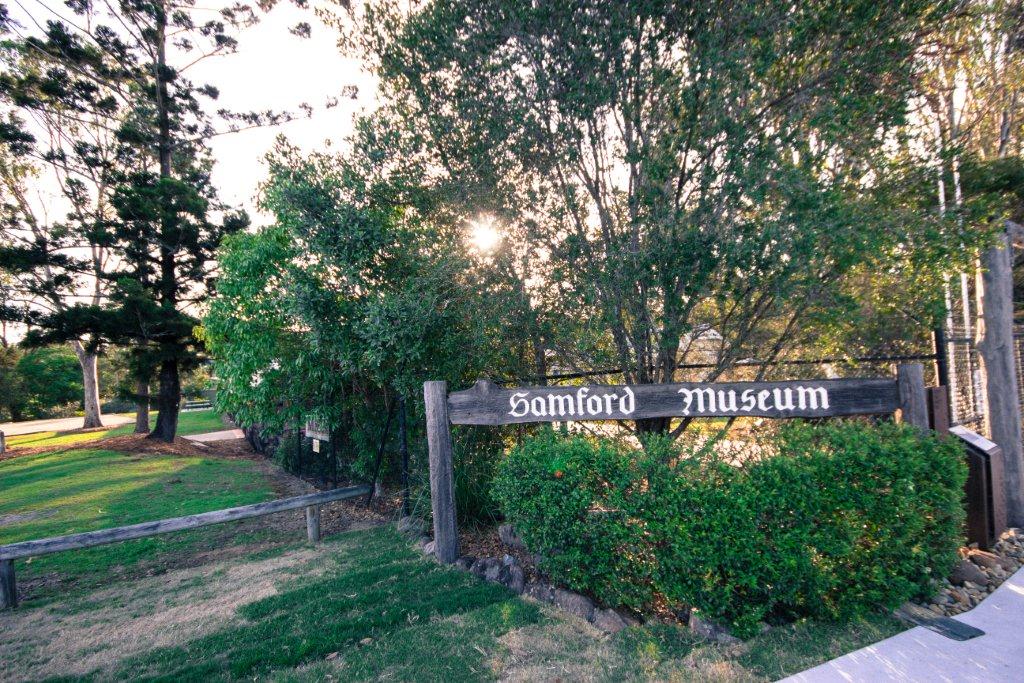Samford Museum

A brief history of the Samford Valley.
Records at Queensland State Archives show a lease was held from 1855 for the land where Samford is today. The Government began putting up parts of lease land for sale and selection from 1865.
It was heavy forest land and had no easy access, as the river valley is surrounded by steep ranges. Smaller holdings led to closer settlement taking advantage of a favourable water supply in many creeks flowing into the South Pine River. The main source of income for the settlers was timber, dairying, bananas, small crops and fruit.
Samford Provisional School was built in 1872 by the farmers, and in 1878 a two-room state school was built by the Government. Near the school, a cemetery reserve under trusteeship of local residents has been used since 1877.
1914 – 1918 World War 1 saw many local lads join the forces. Some returned soldiers were given holdings at the Highlands later named Highvale. Soldier Settlement farms were too small on which to make a living and many left.
Prior to the railway line reaching Samford in 1918, farmers took their cream three times a week to a pick-up point for delivery to Kingston Butter Factory via the Enoggera railway station.
With relocation of the hotel and the small shop and Post Office closer to the railway station in 1918, Samford Village began to evolve. 1926 – 1927 saw more bananas consigned from Samford Railway Station than any other in Queensland. Disaster hit the industry in early 1930’s with “bunchy – top” virus, necessitating a Government order for all plantations to be destroyed.
Visit the Samford Museum next time your in Samford. The Samford Museum
